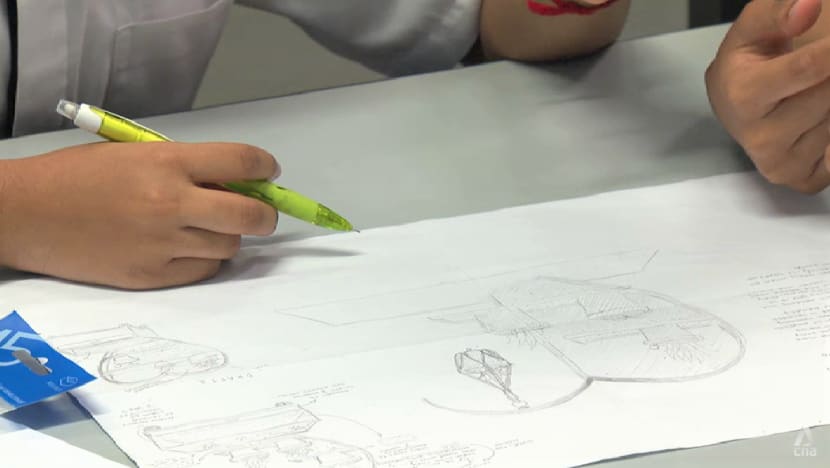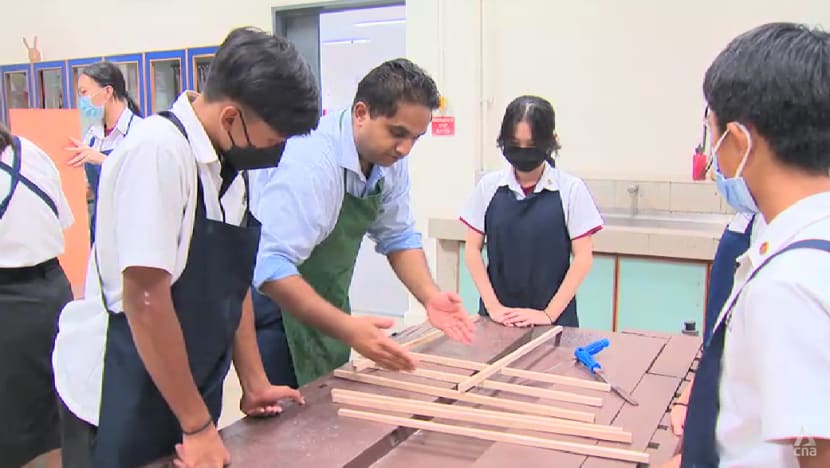Nurturing the next generation of creative thinkers through design education
By 2050, students in Singapore are expected to be able to use design to solve complex real-world problems such as an ageing population.

SINGAPORE: Schools will be incorporating design education in their curriculum by 2050, with the aim of getting students to use design to solve complex problems.
The move will go towards nurturing creative thinkers, who are expected to use their design know-how to address real-world issues such as climate change and an ageing population.
Already, schools have made design education a part of the curriculum. Their students’ inventions have also made a difference, especially for seniors, according to the schools.
At Northland Secondary School, students use specialised goggles and simulators that recreate the effects of ageing, such as deteriorating eyesight and hand tremours. These tools help students put themselves in the shoes of seniors who face mobility and visual problems.
The school in Yishun offers an Applied Learning Programme (ALP) that focuses on using technology to improve the well-being of the elderly. ALPs are meant to help students learn through hands-on experience.
UNDERSTANDING PROBLEMS
Student Kyara Akber said she got to learn about ageing and the challenges that seniors face, including the simple tasks “that we can do easily in a few seconds, but they take minutes to do”.
“Now, I understand what the elderly face daily, and it is not easy,” she added.
The students, with some guidance from their teachers, have also come up with different inventions to help the elderly.
For example, they have created plant stands to remind seniors to water their plants. Simple coding is used, with a red display showing when the soil is dry and requires watering.

Mr Aaron Rajoo, a teacher at Northland Secondary School, said the students are presented with opportunities to figure out how to approach the more complex issues.
“We wanted to start with this idea of empathy first, so that we could properly define the problem. So, whatever we came up with to solve the issue was actually making a difference,” he said.
With a clear structure, the students are “able to find a solid foundation to ideate in complex situations”, he added.
TACKLING COMPLEX ISSUES
Institutes of Higher Learning are also using design to tackle complex real-world problems.
At the Singapore University of Technology and Design (SUTD), some students have worked with the Changi General Hospital to construct a pavilion next to Block 70 Bedok South Road, with designs that encourage seniors to stay active.
The team considered various age-friendly features, including ergonomic structures, for the pavilion, said SUTD architecture student Ian Chung. “We also incorporated armrests and also a large table for them to have their own activities (as well as) some gardening areas.”
But beyond design, the university is hoping to add artificial intelligence into the mix.
"We are a technology university at the end of the day, so we are always kind of feeling the pulse of what is going on,” said Dr Thomas Schroepfer, an architecture and sustainable design professor at SUTD.
He added that Singapore could even be a role model when it comes to designing solutions for future cities.

















